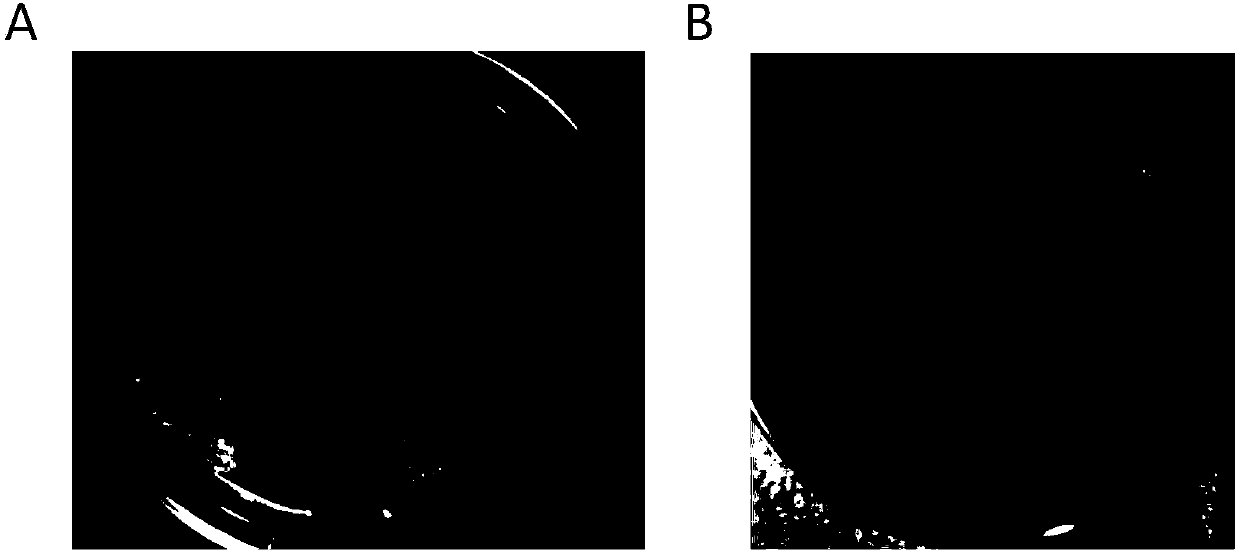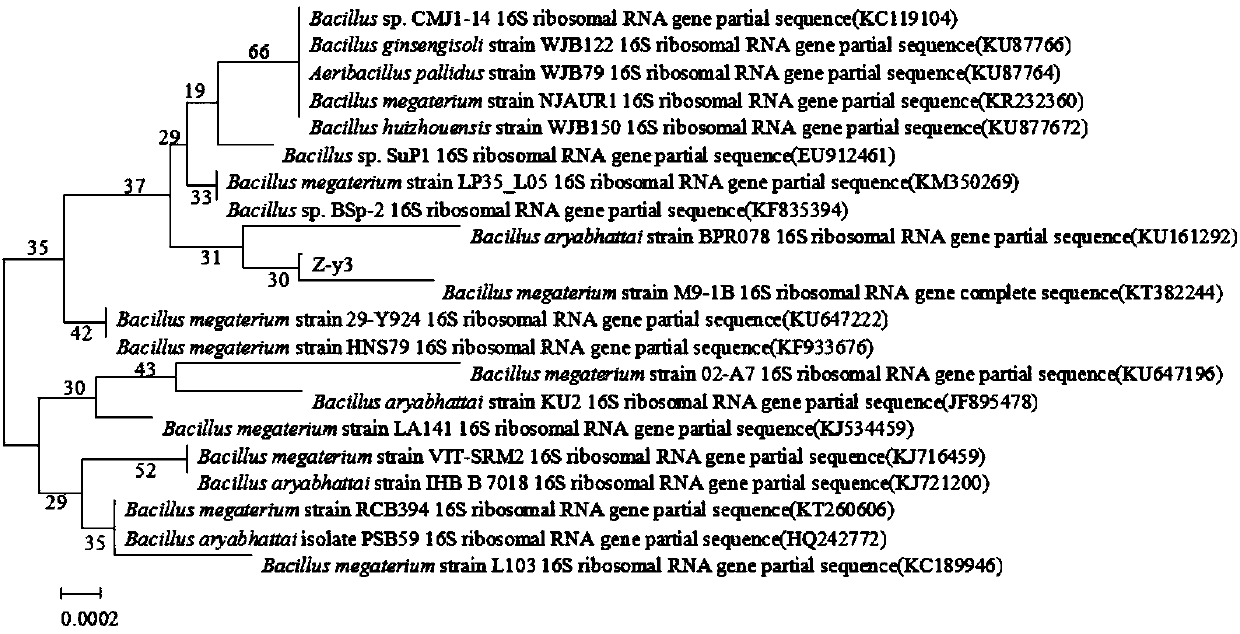Bacterium capable of adsorbing lead and enduring heavy metals and application of bacterium
A heavy metal and tolerance technology, applied in the field of environmental biology, can solve problems such as high cost, incomplete treatment, and secondary pollution, and achieve high tolerance, high application value, and high efficiency
- Summary
- Abstract
- Description
- Claims
- Application Information
AI Technical Summary
Problems solved by technology
Method used
Image
Examples
Embodiment 1
[0028] [Example 1] Screening and tolerance test of lead-tolerant bacteria
[0029] The experimental soil samples were taken from the rhizosphere and non-rhizosphere soil around a radio equipment factory in Wuhan City, Hubei Province. After the soil samples were collected, they were returned to the laboratory and immediately stored at -20°C to kill insects and plant tissues in the soil as well as some Virus. After 10 hours of treatment, it was thawed at 4°C, and the excess soil samples were stored in a 4°C refrigerator. Take 10g soil sample, add 100mL sterile water and shake for 2h, take the supernatant and adopt conventional gradient dilution plate coating culture method (medium containing Pb 2+ The concentration is about 100mg / L), cultured in a constant temperature incubator at 28°C for 24-48h, and the strains with good growth potential were selected to be purified and re-screened on the selection medium with a concentration of 200, 300, and 400mg / L in turn. The basal mediu...
Embodiment 2
[0033] [Example 2] identification of bacterial strains
[0034] Inoculate the purified strain on solid LB medium and culture for 2 days to observe the morphological characteristics of the colony of the strain on the solid plate: the colony is round, creamy yellow to brownish yellow, opaque, the diameter of the mature colony is about 0.6cm, the colony is moist, sticky and easy to pick Pick. After the purified strains were inoculated in liquid LB medium, samples were taken regularly within a certain period of time to determine the OD 600 , to draw the strain growth curve. The logarithmic growth phase will be reached within 12 hours in liquid LB culture medium shaker shaker constant temperature 37 ℃, and the stable phase will be reached within 24 hours. , mostly round or oval, with smooth edges, the color of mature colonies turns brownish yellow, and the colonies may become wrinkled near the edges; the physical and chemical properties of the strains are mainly identified by ref...
Embodiment 3
[0040] [Example 3] bacterial strain removes Pb 2+ Characteristic research
[0041] Experiments on the influence of pH, adsorption time, and initial concentration of heavy metal ions on the adsorption effect. The bacterial strain was expanded and cultivated in LB culture medium at 37°C and 180rpm for 12h, and the obtained activated strain was centrifuged at 8000rpm for 10min. 2.3, about 20g / L) for later use. Use 1mol / L NaOH and HNO3 to adjust the pH of a solution containing a certain amount of Pb2+ to be 3, 4, 5, 6, 7; Pb 2+ The initial concentration is 25, 50, 75, 100, 150, 200 mg / L; inoculate 5% (v / v) prepared concentrated bacterial solution in a certain concentration of Pb-containing 2+ In the middle, take the supernatant regularly to measure Pb 2+ content.
[0042] (1) pH value. Depend on image 3 The pH of the medium and low initial pH experimental group changes with time, and it can be known that the bacteria has an alkali-producing effect; combined with the change...
PUM
| Property | Measurement | Unit |
|---|---|---|
| diameter | aaaaa | aaaaa |
Abstract
Description
Claims
Application Information
 Login to View More
Login to View More - R&D
- Intellectual Property
- Life Sciences
- Materials
- Tech Scout
- Unparalleled Data Quality
- Higher Quality Content
- 60% Fewer Hallucinations
Browse by: Latest US Patents, China's latest patents, Technical Efficacy Thesaurus, Application Domain, Technology Topic, Popular Technical Reports.
© 2025 PatSnap. All rights reserved.Legal|Privacy policy|Modern Slavery Act Transparency Statement|Sitemap|About US| Contact US: help@patsnap.com



